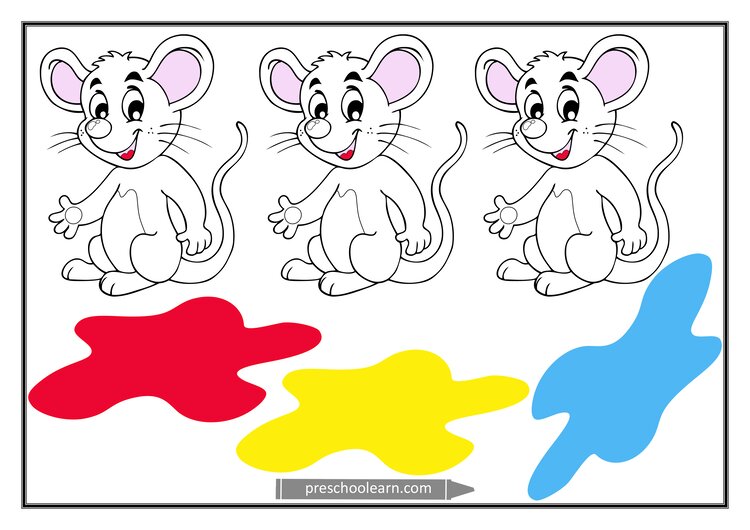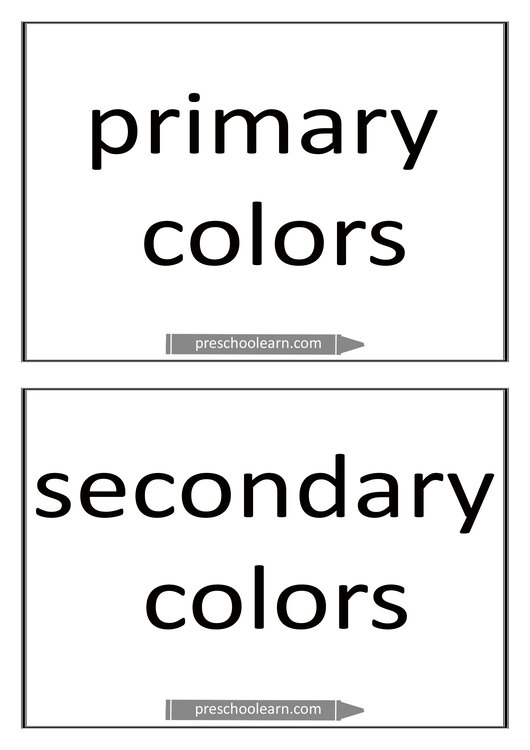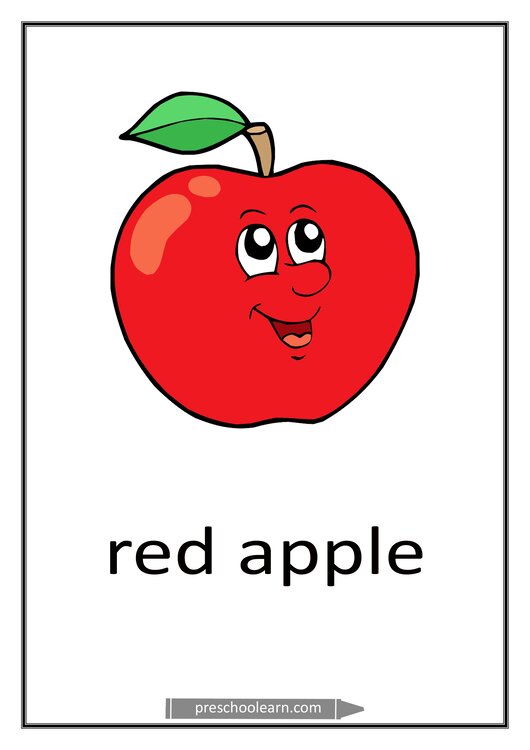Kindergarteners will listen to a story entitled ‘Mouse Paint’, perform an experience that will help them find out how secondary colors can be created from primary colors and consolidate this knowledge by decoding secondary colors from primary colors. They will take part in the movement activities with colors and start to learn a song entitled ‘The Rainbow Colors’.
Materials:
a story entitled “Mouse Paint”, music for marching/running/jumping, 3 ice cubes in blue, yellow, red, white (frozen water with paint), transparent containers, colorful objects, sashes in three colors (one for each child), maracas, 2 hula-hoops/discs/sashes, circles of colored paper (3 red, 3 yellow, 3 blue, green, orange, purple), cards with inscriptions: primary colors, secondary colors, 3 large cards from a technical block (green, orange and purple), colored paper strips (blue, yellow, red) one more than there are children, a worksheet entitled “Colorful coding”, poster paints: red, blue, yellow, white, brushes, a song entitled “Rainbow Colors”, picture cards for the song.
Activity description:
1. “Hello to those who …” – greeting – children and their teacher sit in a circle. Teacher pronounces the sentences, and children who are wearing something in this color, get up, go around the circle and return to their place. Teacher comes up with new sentences until all children are greeted.
- Hello to those who are wearing something blue,
- Hello to those who are wearing something red,
- Hello to those who are wearing something green,
- Hello to those who are wearing something white,
- Hello to those who are wearing something yellow.
2. “Mouse Paint” – listening to a story written by Ellen Stoll Walsh – children sit comfortably in a circle and listen to the story entitled “Mouse Paint”. Teacher shows the picture while listening to the story.
Next, teacher asks kindergarteners:
- How many mice were in the story?
- What color were they?
- Where did they climb?
- What happened next?
- What color did red mouse feet make in a yellow puddle?
- What color did yellow mouse feet make in a blue puddle?
- What color did blue mouse feet make in a red puddle?
- * Where did mice wash?
- What did mice paint?
- Why did they leave some white part on the paper?
- Do you think it’s fun to mix colors?
3. “Touch the color …” – movement activity – children march, jump or run around the room to the rhythm of any music. During a break in the music, teacher gives the name of the color that children have to find in the room and touch. Repeat the game by saying as many colors as possible in the room.
4. “We mix colors” – didactic activity – teacher places transparent containers and colorful ice cubes on a tray on the carpet. Then, teacher asks children one by one to place ice cubes in the containers i.e. yellow with blue, yellow with red and red with blue. The remaining 3 cubes (yellow, blue, red) can be placed in a separate container. One by one, children try to guess what will happen (ice cubes will dissolve and mixed colors will create new colors) and place a colored object in front of the containers, which they think will be made of mixing the given ice cubes. Teacher then sets the tray aside. The results of the experiment will be checked after the movement activity. You can also watch the cubes all the time – this will allow seeing the exact color merging from the melting ice cubes into a new color.
* You can also prepare ice cubes with white paint and dissolve them with other colors – this will allow observing the lightening of the colors (red and white can be bright red or pink).
5. “Colorful interweaving” – movement activity – teacher gives away children’s sashes in three colors. Children move around the room to the rhythm of the song entitled “Mix the Colors”. When the music stops, teacher gives an order: position ourselves around the circumference of the circle, e.g. yellow, blue, red. A child with a yellow sash stands next to a child with a blue sash, and this in turn stands next to a child with a red sash. Children create a “jumble” of colors. Then, teacher checks the correctness of the completed task. Repeat the game several times by changing the order of the colors of the sashes.
6. “Primary and secondary colors” – didactic activity – teacher places colored paper circles and two hula-hoops/discs/sashes on the carpet and places a card in each of them with the caption: primary colors, secondary colors. Next, teacher asks children to read the names of the collections. Then, teacher explains that primary colors are those that cannot be obtained by mixing paints of any other color. Secondary colors come from mixing two primary colors. In turn, teacher asks children to name and correctly place the colors in hula-hoops/discs/sashes. Then, teacher asks to assign secondary colors – circles in the colors that they are made of.
7. “Primary and secondary colors” – didactic and movement activity – teacher places 3 large cards from a colored technical block (green, purple and orange) in the room. Then, children pull out colorful stripes (red, yellow and blue) from the box and, while the music is playing, they move in any direction on the carpet. During a break in the music, children position themselves around a card in a color that can be created of the color they hold in their hands (e.g. children who have a red stripe can stand next to a purple or orange piece of paper). After checking the correctness of the task, children return to the center of the carpet and exchange the stripes – you cannot exchange for the same color. Repeat the game several times.
8. “Colorful coding” – worksheet – teacher explains how to complete the task (children should not pick up a lot of paint on the brush – a little bit is enough). Next, teacher asks children to go to the tables and gives away the worksheets. During the task, teacher walks between desks, helps children if they need it and checks the worksheets.
9. “Coded gymnastics” – movement activity – children march, jump or run around the room to the rhythm of any music. During a break in the music, teacher holds up one of the colored cards (orange, purple, green) and children make the following movements:
- green – straight jump
- purple – clap overhead
- orange – star jump
10. “Rainbow Colors” – listening to the song – children sit in the circle and listen to the song. Teacher shows the picture cards while listening to the song. When the song is over, teacher talks with preschoolers about the lyrics of this song.
Rainbow Colors
Tell me, tell me, what do you see?
I see an apple, and it’s red!
Tell me, tell me, what do you see?
I see a carrot, and it’s orange!
Tell me, tell me, what do you see?
I see a lemon, and it’s yellow!
Tell me, tell me, what do you see?
I see a frog, and it’s green!
Rainbow colors everywhere
Red, orange, yellow, green
Rainbow colors everywhere
Blue, purple, pink!
Red, orange, yellow, green, blue, purple, pink
Tell me, tell me, what do you see?
I see a fish, and it’s blue!
Tell me, tell me, what do you see?
I see a flower, and it’s purple!
Tell me, tell me, what do you see?
I see a flamingo, and it’s pink!
Rainbow colors everywhere
Red, orange, yellow, green
Rainbow colors everywhere
Blue, purple, pink!
Red, orange, yellow, green, blue, purple, pink
11. “Tell me, tell me, what do you see?” – didactic activity – teacher shows children the picture cards in random order, asking: “Tell me, tell me, what do you see?”. Children answer the question.
* You can ask the parents picking up their child from the kindergarten to dress their child in blue tomorrow – or at least to have any blue accent.
Attachments:
Picture for a story entitled “Mouse Paint”
Cards with captions to play “Primary and secondary colors”
Worksheets entitled “Colorful coding”
Picture cards for a song entitled “Rainbow Colors”
Pages used:
- https://www.youtube.com/watch?v=AjohJiyvA0Q&ab – a story entitled “Mouse Paint”
- https://www.youtube.com/watch?v=PJI1AbsDOpQ&ab – music for the “Touch the color” activity
- https://www.giftofcuriosity.com/color-mixing-with-colored-ice-cubes/ – „Color mixing” experiment
- https://www.youtube.com/watch?v=IwfZvRuE7s8&ab – a song entitled “Mix the Colors” for the activities entitled “Colorful interweaving” and “Primary and secondary colors”
- https://www.youtube.com/watch?v=SLZcWGQQsmg – a song entitled “Rainbow Colors”




